Cats are popular pets around the world, known for their insatiable curiosity . They are independent, playful and have a hunting instinct . Cats have an individualistic personality and are affectionate towards their owners , showing affection through purring and rubbing. There are more than 500 million domestic cats in the world, and some of the most curious cat breeds include the Persian , Maine Coon , and Siamese . Cats have incredible hearing and vision, and their curiosity is a natural trait that helps them explore and understand the world around them. It is possible to train cats and encourage them to play and explore through external stimuli . However, owners need to be aware of their cats’ limits, as they may engage in risky behaviors , such as ingesting toxic substances . Additionally, it is important to provide adequate care , such as regular baths and maintaining a clean litter box for use as a toilet.
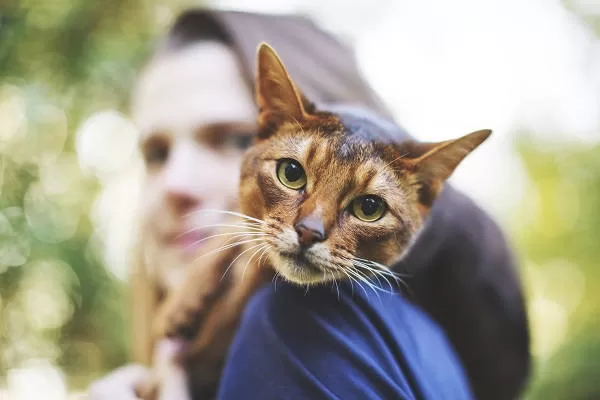
Main points to note:
- Cats are popular pets around the world
- Cats are known for their insatiable curiosity
- They have an individualistic personality and are playful
- Some of the most curious cat breeds are the Persian , the Maine Coon and the Siamese.
- Cats have keen hearing and vision
- It is possible to train and stimulate the curiosity of cats
- Guardians must be aware of the limits and care necessary to avoid risky behavior
Individualistic personality of cats
Cats have an individualistic personality, being independent and playful animals . Their independent nature means they value their personal space and prefer to do things their way. Unlike dogs, cats are not as dependent on constant attention and are perfectly happy to spend time alone.
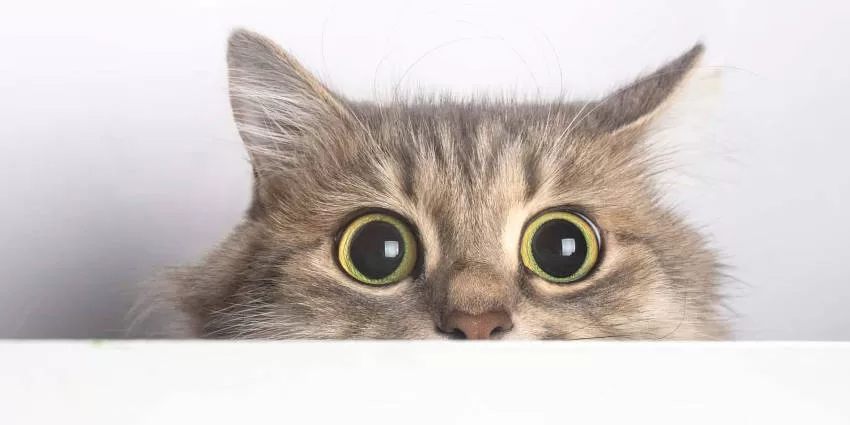
Furthermore, cats are known for their hunting instinct . They love chasing moving objects, like toys or even shadows. This hunting behavior is a key part of their personality, and playing with them using interactive toys is a great way to keep them active and stimulated.
Playful by nature, cats love to have fun. They can spend hours exploring your home, jumping from place to place and hiding in makeshift hiding places. Owners can stimulate this characteristic by playing with them using feathered wands, toy balls or even cardboard boxes. These activities help channel your energy and provide entertainment for the whole family.
| Race | Personality |
|---|---|
| Persian | Calm and loving |
| Maine Coon | Friendly and sociable |
| Siamese | Extroverted and vocal |
Each cat breed has its own distinct personality, but they all share the characteristic of being curious and playful. The Persian, for example, is known for its calm and loving personality, while the Maine Coon is friendly and sociable. The Siamese is extroverted and vocal, always wanting to get the attention of its owners. These breeds are just a few of the many that exhibit unique personalities.
The most curious cat breeds
Among the different breeds of cats , some stand out for their insatiable curiosity. Persian, Maine Coon and Siamese cats are known for their explorative nature and insatiable thirst for knowledge. These breeds are curious by nature and are constantly attracted to stimuli in the environment around them.
The Persian cat, with its long, lush fur, is known for its calm personality and natural curiosity . They love exploring new corners of the house, investigating unfamiliar objects and engaging in stimulating games. The Persian’s curiosity is one of their most striking characteristics, making them charming and fascinating pets.
The Maine Coon is one of the largest breeds of domestic cats, known for its affable personality and playful disposition. With a voracious appetite for exploration, Maine Coons are constantly driven by curiosity, investigating every possible corner in search of new things. Their audacity and courage are outstanding characteristics, making them true adventurers.
Lastly, Siamese cats are known for their outgoing nature and insatiable curiosity. This breed is highly interactive and loves to investigate everything around them. Siamese are fun and curious pets who don’t hesitate to engage in play and explore new situations. Their intelligence and insight make them admirable pets.
The curiosity of these breeds
Curiosity is an inherent characteristic of these cat breeds and brings countless benefits to them. Through their exploratory nature, these animals are able to develop their cognitive abilities, adapt to different situations and learn from the environment around them. Curiosity also helps keep cats mentally stimulated and happy.
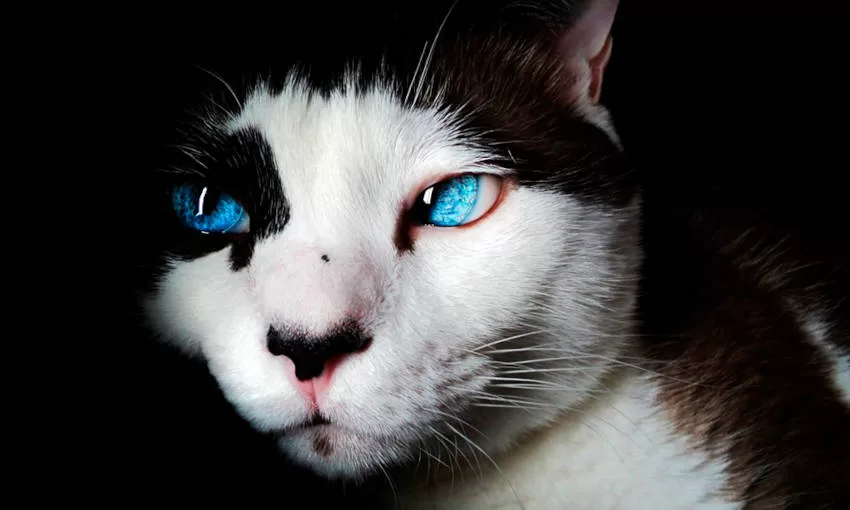
For owners of these breeds, it is important to provide a safe and enriching environment to stimulate the cat’s curiosity. Interactive toys, climbing areas and access to windows to observe the outside world are some ways to promote these animals’ curiosity. Additionally, offering enrichment activities, such as simulated hunting or slow feeding, can help satisfy your cat’s natural curiosity and provide a satisfying experience.
| Race | Characteristics |
|---|---|
| Persian | Long and exuberant coat, calm personality, natural curiosity . |
| Maine Coon | Large size, affable personality, playful disposition, likes to explore. |
| Siamese | Extroverted personality, interactive, curious, intelligent. |
In celebrating the curiosity of these cat breeds, we recognize the importance of providing them with an environment that encourages their investigative and adventurous nature. With proper care and the necessary stimulation, Persian, Maine Coon and Siamese cats can enjoy a life full of discoveries and enriching experiences.
Cats’ heightened senses
Cats have keen senses, including hearing and vision, which make them naturally curious. Their hearing is extremely sensitive, allowing them to detect ultrasonic sounds and subtle movements, making them excellent hunters. They also have the ability to locate the origin of sounds precisely, which increases their curiosity to explore their surroundings.
Cats’ vision is also remarkable, especially at night. They have eyes adapted to see in the dark and a special layer called “tapetum lucidum”, which reflects light, expanding their vision in low-light conditions. This allows them to identify movements and details that would be imperceptible to humans, further awakening their natural curiosity.
Additionally, cats have a keen sense of balance and proprioception, which allows them to navigate narrow surfaces and heights with skill. These physical abilities contribute to their curiosity as they encourage them to explore elevated places such as shelves and furniture.
In short, cats are incredibly curious animals due to their keen senses. Their keen hearing and vision trigger a desire to explore the world around them, making them fascinating and captivating pet companions.
Stimulating cats’ curiosity
It is possible to encourage cats’ curiosity through external stimuli and appropriate training. Cats are naturally curious and exploratory animals , and providing external stimulation will help satisfy this innate need.
An effective way to stimulate cats’ curiosity is to offer interactive toys that challenge their physical and mental abilities. Toys with compartments to hide treats or with unpredictable movements will instigate the cat’s hunting instinct and stimulate its curiosity. Additionally, toys with different textures and scratching surfaces are also great options to encourage exploration.
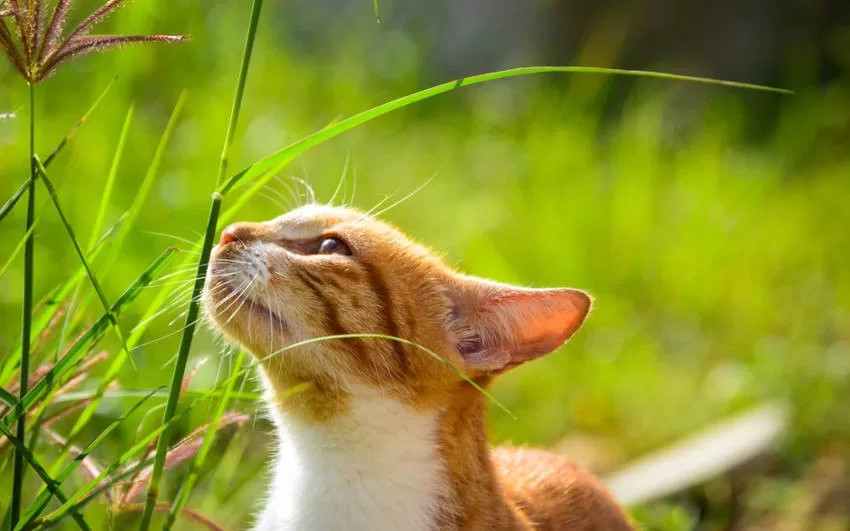
Training also plays an important role in stimulating cats’ curiosity. Teaching simple commands like sit and paw not only provides mental stimulation, but also allows cats to explore new behaviors and increase their understanding of the world around them. Positive training, with rewards and praise, is the most effective approach to stimulating cats’ curiosity.
Additionally, it is important to create a stimulating environment for the cat, with areas to climb, scratch and explore. Shelves on the walls, scratching posts and hanging toys are excellent options for promoting curiosity and physical exercise in cats. Providing environmental enrichment, such as making cardboard boxes or empty paper bags available, can also be a simple and effective way to stimulate cats’ natural curiosity.
| External stimuli to stimulate cats’ curiosity: |
|---|
| Interactive toys: Offer toys that challenge your cat’s physical and mental abilities. |
| Positive training: teach simple commands and reward the cat with treats or praise. |
| Stimulating environment: provide areas for climbing, scratching and exploring, such as shelves, scratching posts and hanging toys. |
| Environmental enrichment: provide cardboard boxes, empty paper bags or other opportunities for exploration. |
Through these strategies, owners can encourage their cats’ curiosity and provide an enriching environment that keeps their cats happy, healthy and stimulated.
Limits and care for curious cats
Owners of curious cats must be aware of limits and precautions to avoid risky situations. Cats’ natural curiosity can lead them to explore dangerous places and engage in behaviors that can be harmful to their health. One of the main precautions is to ensure that the house is a safe environment for the cat, where it can play and explore without taking unnecessary risks.
It is important to be careful with toxic substances, such as cleaning products, poisonous plants and foods unsuitable for feline consumption. Keep these items out of your cat’s reach and be extra careful when using chemicals in your home. Also, avoid leaving bare electrical wires and small objects that your cat could accidentally swallow.
Another important measure is to establish limits to prevent the cat from accessing dangerous areas, such as high balconies or open windows. Use protective nets or bars to ensure your pet’s safety. It is also recommended to regularly visit a veterinarian to monitor the animal’s health and prevent possible problems arising from its curiosity.
Proper Care
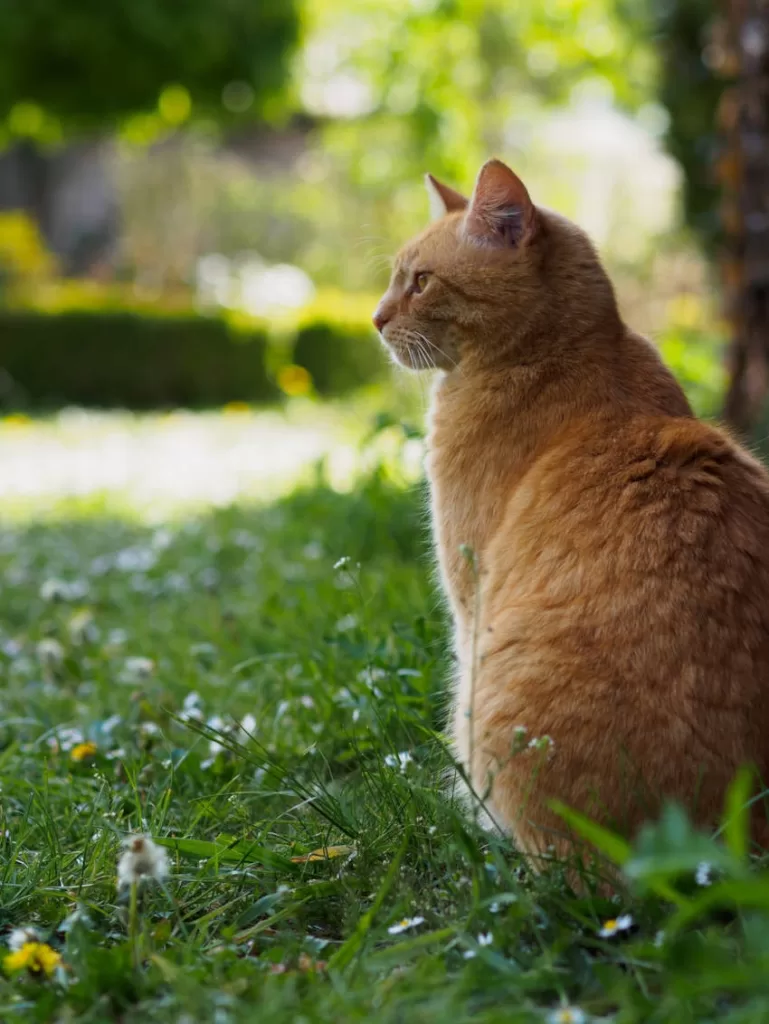
In addition to setting limits, it is essential to provide adequate care to ensure the health and well-being of your curious cat. Regular bathing is essential to maintain your animal’s hygiene and prevent skin diseases. Make sure to use products specifically for cats and never use products intended for humans, as they can be harmful to the animal’s health.
Regular cleaning of the litter box is also extremely important. Cats are very clean animals and will use the litter box as their bathroom. Always keep the box clean, removing feces and changing the litter regularly. This will not only provide comfort to your cat, but also prevent health problems and unpleasant odors in your home.
Owners of curious cats must be prepared to provide a safe and stimulating environment for the animal. With proper care and constant attention, you can ensure that your cat can explore and satisfy its curiosity in a safe and healthy way.
| Risky behaviors | Ingestion of toxic substances | Proper care |
|---|---|---|
| Exploration of dangerous areas | Ingestion of cleaning products | Establish limits and restrict access |
| Swallowing small objects | Intake of harmful foods | Visit the veterinarian regularly |
| Access to high windows and balconies | Contact with poisonous plants | Take regular baths |
Basic care for cats
In addition to establishing limits, it is important to provide basic care to ensure the cats’ well-being. Regular baths and a clean litter box are essential to keeping cats healthy and happy.
Regular baths help maintain cats’ hygiene by removing dirt, dander and unwanted odors. However, it is important to remember that not all cats like water, so you need to be patient and make bathing a calm and positive experience. Use products suitable for cats and follow the manufacturer’s instructions to ensure safety during bathing.
The litter box is an essential item for cats, as they are naturally clean animals and like to do their business in a specific place. Keep the litter box clean by removing waste daily and changing the litter regularly. Cats are sensitive to smell and may refuse to use a dirty box, which can lead to health and behavioral problems.
In addition to baths and a clean litter box , it is important to provide your cat with a balanced diet, adequate exercise and regular visits to the veterinarian. These basic precautions will help keep your feline happy, healthy and stimulate their natural curiosity.
| Basic care for cats |
|---|
| Regular baths |
| Clean litter box |
| Balanced diet |
| Proper Exercises |
| Regular visits to the veterinarian |
The benefits of cats’ curiosity
Cats’ curiosity brings several benefits, such as the development of feline intelligence . This natural characteristic of cats, combined with their keen senses, makes them natural explorers and helps them better understand the world around them. By satisfying their curiosity, cats stimulate their brain and develop their cognitive abilities.
Furthermore, cats’ curiosity makes them more agile and alert. They are constantly exploring, playing and investigating their environment, which strengthens their muscles and keeps them fit. This constant activity also helps prevent a sedentary lifestyle and health problems related to lack of exercise.
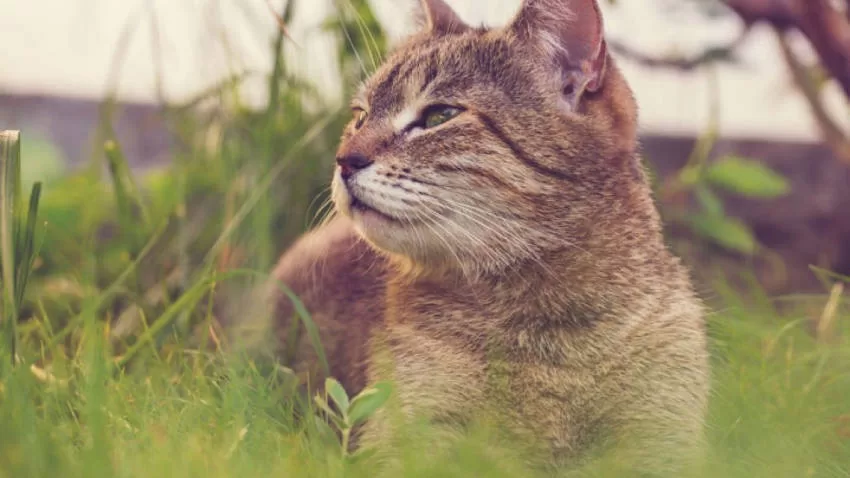
Cats’ curiosity also contributes to their social interaction. When a cat is curious, it seeks to receive external stimuli and interact with its environment and the people around it. This strengthens the bond between cats and their owners and promotes a stimulating and enriching environment for both.
| Benefits of cats’ curiosity: |
|---|
| Development of feline intelligence |
| Greater agility and alertness |
| Preventing a sedentary lifestyle |
| Strengthening the bond with the tutor |
Conclusion:
Cats are true born explorers , whose curiosity brings a series of benefits to them and their owners. Their feline intelligence is honed through constant exploration, which keeps them agile, alert, and physically and mentally stimulated. Cats’ curiosity also strengthens the bond between them and their owners, providing a more enriching and rewarding relationship. Therefore, it is important to celebrate and encourage cats’ curiosity by providing a safe and stimulating environment for them to continue exploring the world around them.
Curiosity as part of the feline essence
Curiosity is an intrinsic part of the feline essence , helping cats explore and understand the world. This natural characteristic is visible in all cat breeds, from the Persian to the Maine Coon and the Siamese. Cats express their curiosity through behaviors such as exploring the environment, investigating unknown objects and seeking external stimuli.
Cats’ keen senses, such as hearing and keen vision, contribute to their natural curiosity. They are able to detect the slightest noises and movements, which makes them excellent hunters and explorers . Through curiosity, cats are able to learn about their environment, identify prey, and protect themselves from potential threats.
To stimulate cats’ curiosity, it is possible to offer external stimuli, such as interactive toys, scratching posts and climbing areas. These objects provide opportunities for cats to satisfy their curiosity and hunting instinct, allowing them to have fun and stay mentally stimulated.
| Most curious cat breeds | Characteristics |
|---|---|
| Persian | Calm, observant curiosity |
| Maine Coon | Adventurous and exploratory curiosity |
| Siamese | Vocal and playful curiosity |
It is important that owners establish limits and appropriate care for curious cats. This includes maintaining a safe home, free from dangerous objects and toxic substances. In addition, owners must provide basic care, such as regular baths and a clean litter box, to ensure the cat’s well-being and health.
Conclusion: Celebrating Born Explorers
Cats are true born explorers , and we should celebrate their insatiable curiosity. These popular pets around the world are known for their independent and playful personality, as well as having a keen hunting instinct. With more than 500 million domestic cats in the world, some breeds stand out for their curiosity, such as the Persian, the Maine Coon and the Siamese.
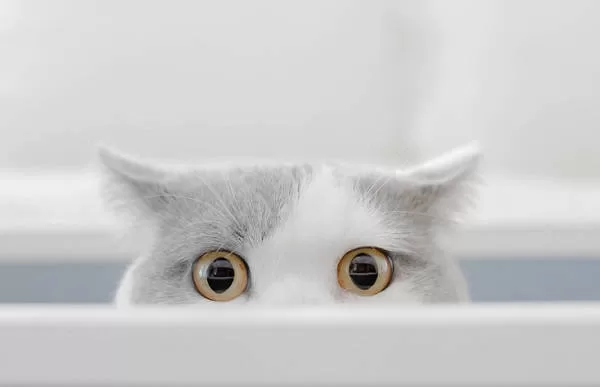
Cats have keen senses, such as exceptional hearing and keen vision, which contribute to their natural curiosity. This characteristic is part of the feline essence and helps them explore and understand the world around them. It is possible to further stimulate cats’ curiosity through training and offering external stimuli to play and explore , providing a richer and more stimulating life for these unique animals.
However, it is important to set limits and provide appropriate care for curious cats. They may engage in risky behaviors , such as ingesting toxic substances . It is up to owners to understand and respect their cats’ needs, offering regular baths and maintaining a clean litter box for use as a bathroom.
Cats’ curiosity has numerous benefits, including the development of feline intelligence and a deeper understanding of the world around them. These adorable born explorers enchant us with their curious nature and teach us to appreciate the wonders of life. Let’s celebrate the curiosity of cats and value the uniqueness they bring to our lives!
FAQ
Q: Are cats popular pets around the world?
A: Yes, cats are popular pets around the world.
Q: What characteristics do cats have?
A: Cats are independent, playful and have a hunting instinct.
Q: How do cats show affection?
A: Cats show affection by purring and rubbing against their owners.
Q: How many domestic cats are there in the world?
A: There are more than 500 million domestic cats in the world.
Q: What are some of the most curious cat breeds?
A: Some of the most curious cat breeds include the Persian, Maine Coon and Siamese.
Q: What are cats’ heightened senses?
A: Cats have incredible hearing and vision.
Q: How to stimulate cats’ curiosity?
A: It is possible to stimulate cats’ curiosity through training and offering external stimuli to play and explore.
Q: What precautions should be taken with curious cats?
A: Owners must be aware of their cats’ limits to avoid risky behaviors, such as ingesting toxic substances .
Q: What are basic care for curious cats?
A: Basic care for curious cats includes regular baths and keeping a clean litter box for use as a toilet.
Q: What are the benefits of cats’ curiosity?
A: The benefits of cats’ curiosity include developing feline intelligence and greater understanding of the world around them.
Q: Why is curiosity part of the feline essence?
A: Curiosity is part of the feline essence , being a natural characteristic that helps cats explore and understand the world around them.
Source Links
- https://www.hospvetsantamarinha.com/blog/60-curiosidades-gatos/
- https://www.revistapulodogato.com.br/comportamento-felino/por-que-gatos-sao-tao-curiosos/
- https://caocidadao.com.br/gatos-quais-sao-os-fatos-mais-curiosos-sobre-os-felinos/

